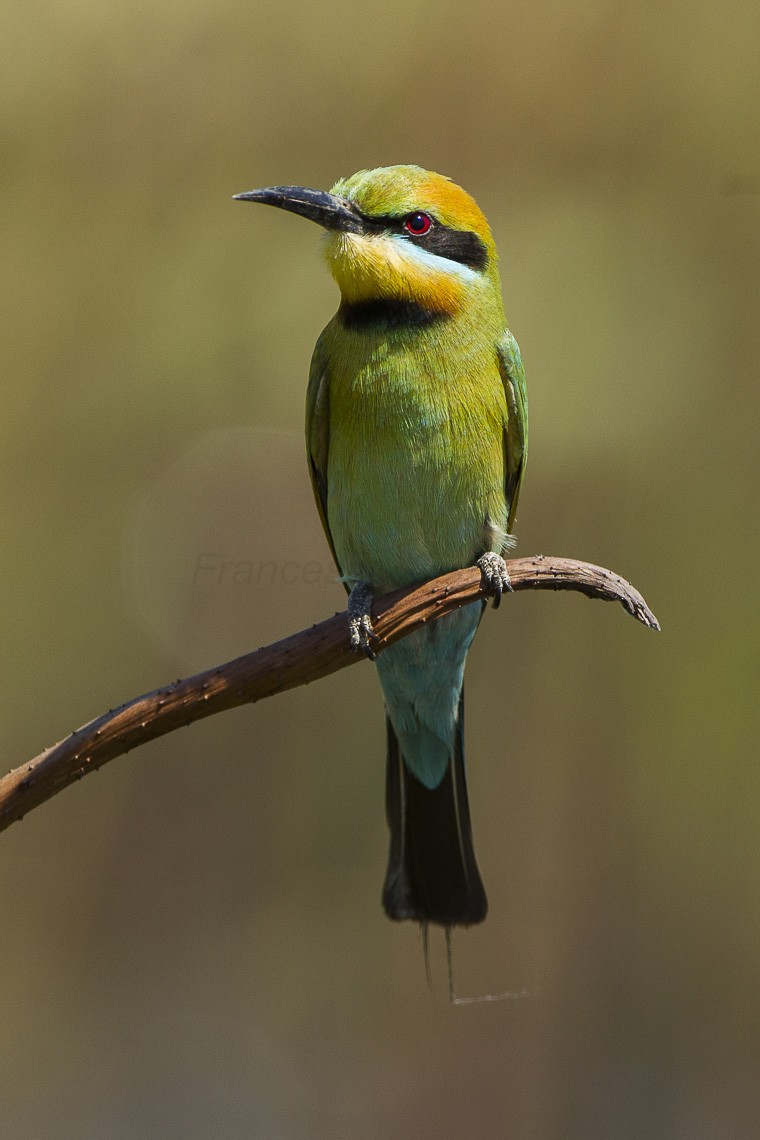Rainbow Bee-eater
A species of Typical Bee-eaters Scientific name : Merops ornatus Genus : Typical Bee-eaters
Rainbow Bee-eater, A species of Typical Bee-eaters
Botanical name: Merops ornatus
Genus: Typical Bee-eaters
Content
Description People often ask General Info
 Photo By Francesco Veronesi , used under CC-BY-SA-2.0 /Cropped and compressed from original
Photo By Francesco Veronesi , used under CC-BY-SA-2.0 /Cropped and compressed from original Description
Rainbow bee-eaters are brilliantly coloured birds that grow to be 23–28 cm (9.1–11.0 in) in length, including the elongated tail feathers, and weighing 20–33 g (0.71–1.16 oz). The upper back and wings are green in colour, and the lower back and under-tail coverts are bright blue. The undersides of the wings and primary flight feathers are rufous to copper with green edges and tipped with black, and the tail is black to deep violet. The rainbow bee-eater's two central tail feathers are longer than the other tail feathers, and are longer in the male rainbow bee-eaters than in the females. The crown of the head, the stomach and breast, and the throat are pale yellow-orange in color, and it has a black crescent-shaped gorget and a black stripe, edged with blue, extending through its bright red eye. They have small, syndactylous feet (i.e., with toes partly united). The juvenile has a greener crown, lacks throat bands and tail streamers. 
Size
18-20 cm (7-8 in)
Colors
Brown
Black
Green
Yellow
Blue
Orange
Life Expectancy
2 years
Nest Placement
Burrow
Feeding Habits
Rainbow Bee-eater primarily consume flying insects, notably bees. They forage by spotting prey from a perch and catching insects mid-flight with their bill. To subdue and remove stingers, prey is struck against the perch. Their dietary habits balance bee predation with pest control, consuming hundreds of bees daily.
Habitat
Rainbow Bee-eater's habitat spans open woodlands and grassy clearings, especially near water sources. They adapt to diverse environments, from coastal beaches and suburban gardens to savannas and farmlands. With a preference for open areas and forest edges, rainbow Bee-eater inhabit regions including Australia, New Guinea, and the southern Indonesian islands, demonstrating a flexible and broad habitat range.
Dite type
Insectivorous
People often ask
General Info
Feeding Habits
Bird food type
Behavior
Like all bee-eaters, rainbow bee-eaters are very social birds. When they are not breeding they roost together in large groups in dense undergrowth or large trees. 
Distribution Area
Rainbow bee-eaters are a common species and can be found during the summer in forested areas in most of southern Australia, excluding Tasmania. They migrate north during the winter into northern Australia, New Guinea, and some of the southern islands of Indonesia. A vagrant has been recorded on Miyako Island, Japan. They may be found in open woodlands, beaches, dunes, cliffs, mangroves, and farmlands, and they often visit parks and private gardens. 
Species Status
The rainbow bee-eater is a common, migratory species with a wide distribution and stable population, which is classified as least concern on the IUCN Red List. 